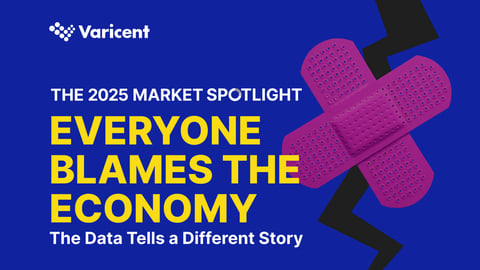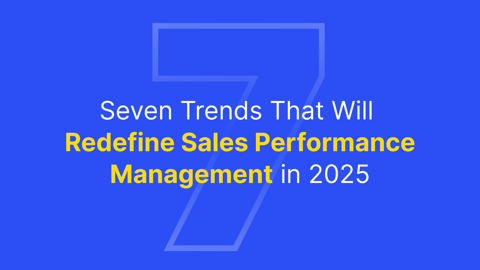
Tell us a bit about who you are and what you do?
I’m the Revenue Operations Systems Manager at Vidyard. Functionally that means I’m a systems admin for any of the revenue operations systems and technologies that we have in place to help the marketing, sales, and customer success teams be more efficient in creating revenue.
You started out in Marketing, how did you get into that?
It was kind of an accident. In high school I wasn’t really sure what I wanted to be – I originally thought I wanted to be a plumber and as I was going through that process I realized how difficult it actually was to do that. I got into some factory work to pay the bills and that really gave me the real-world education that trades wasn’t a good fit for me.
I went back to night school, taking business admin marketing and entrepreneurial marketing and ended up where I am today.
Give us the 30-second pitch on Vidyard.
We help companies drive more revenue through strategic use of online video.
We make it easy to track and analyze engagement with video assets. Typically you only know one or two data points, like a view or geographic data of a viewer. We get really granular into the data points about a specific person and how they’re watching a video. Vidyard gives you data and insights about the assets you have, then makes it actionable like tailoring your follow-ups based on your video assets.
There were already a few revenue operations systems in place when you joined Vidyard. What were some of the biggest challenges with building on a revenue operations system someone else set up?
Joe Gelata, our [Head of Global Demand Generation & Revenue Operations], has some pretty advanced processes in place, and getting up to speed on why those processes are the way they are and
exactly how all the systems interact, is the biggest challenge when you’re coming on with existing technology.

How are you managing the integrations with those different revenue operations systems?
Really it was a crash-course with Joe on “What do you remember on how this was set up originally?” Then digging into each, and doing use-case testing to checking how data flows back and forth.
Documentation is one thing, but looking at how the data flows back and forth is the best way to see what’s actually going on. So many revenue operations technologies claim to be set it and forget it solutions, but without seeing exactly how the data changes it can be difficult to feel confident in what's happening to your information.
You’re tasked with a mix of revenue operations and systems management. How do you balance what the revenue operations systems can do and what gets asked of you from a data management and reporting side?
Whenever possible I try to look at it from an automation standpoint: what would I need to set up to make this happen automatically.
There’s so much you can do quickly from a manual standpoint, but that’s not scalable. If something only takes you 20 minutes to do today, it’s 20 minutes every time. But if you take the extra hour to think it through, automate it, spend an hour on it, then you never have to think of it again. So I try wherever possible to keep the one-off requests to a minimum and build it into a task list for automating everything.
Many people think about changing marketing systems – how would you suggest people handle moving between services like, say, Marketo and Pardot?
It’s definitely not easy. Really, I don’t even suggest trying to move historical activity data that drives rules. Like if you’re moving from Marketo to Pardot, those existing marketing automation systems have rules based on interactions with assets; that’s usually proprietary stuff that you need an integration partner to help you move over. So you either have to rebuild all those rules or start fresh from day one.
The CRM will store your information for the historical stuff, but it won’t always be able to pull that information back into your automation platform. Definitely focus on either having a partner move that information for you or start fresh with the new system and work off the assumption that today is a clean slate.
So it’s not necessarily your platform that’s incorrect, but the way it's been implemented into your revenue operations system?
Or both. You may have expected something that the platform would be able to provide and all your customizations were acting as a workaround. Translating that to a new system can bring the same issues over.
What are the big challenges people have putting a new revenue operations system in place? Should they be working with a vendor or an agency?
I worked agency side before and it really depends on your comfort level with the system you’re putting in place. If you haven’t dealt with marketing automation technology before, you don’t want to take on the full implementation by yourself. You need somebody who has done it before, who can understand what you’re trying to communicate from your business requirements to what you’re trying to set up.
But if you have lots of experience and a history with the technologies, you can take that on yourself. It’s just whether you have the time with the rest of your daily work.
There’s people like me, whose entire job is managing these systems, but if you’re running an entire department – you have lots of other responsibilities that you’re worried about in addition to a system implementation, so it can be challenging.
Bringing an agency on for the short-term as a managed resource for an implementation isn’t a bad idea, but be sure to budget for it in your onboarding of the new system.
When do people get a full-time you?
It’s really a question for people like Joe. It’s when you say “I don’t have enough time to get all the systems management stuff done because I have a lot of other responsibilities.” A lot of Joe’s job is the strategy and analysis of what’s happening with our prospects and the things that I’m doing come out of that process.
When your management and analysis tasks become so big that one of them is falling behind you need to split that into two different responsibilities.
Any advice you think people should have?
Never assume that the technology you’re purchasing is going to do something you haven’t tested. A lot of people say “You know, I can collect all of this information, I can do all these rules.” They assume because the system says it can do something that it will behave the way they expect it to.
But systems will have limitations – on how filters work, for example, they do things you don’t expect; or the way you might group information by date is different from the way the system actually behaves. Before you plan out how you want to implement a new process, definitely test how the information actually behaves.
A lot of times in my early career I’d get a question and say “Yeah, that makes sense. No problem. I’ll have it to you this week.” Then when I go to actually implement it, I discover there’s that one limitation that prevents me from delivering on it. I think it’s important for someone in a systems admin role to get used to saying “maybe." A lot of people say fake it till you make it, but in a systems role that’s not something you can always do.
How do you handle program management – where do you fit in with the rest of the marketing team?
Marketing is coming up with campaigns, sales is following up with all the leads that come out of it. How do all those prospects flow from marketing qualified lead to a sales qualified lead or sales accepted lead? That’s really Joe's responsibility in terms of figuring out the process, coming up with the entire project plan. After Joe comes up with that, I have to figure out how to make his dream a reality in our systems.
A lot of the responses are tracked in our marketing automation systems and flow into Salesforce. All of our formulas and tracking of how people flow into our sales process are built on Salesforce. We have insight tools as well that track the timeframes between each stage and control how opportunities flow between each process; so any changes to the process will affect the insight tool as well.
That’s a big part of my job: keeping track of how the changes we make in our process impact the tools we’ve bolted on.
So if there’s a VP of Marketing out there reading this, their key takeaway should be there’s a butterfly effect when you ask for a change in process?
Yeah, for sure. The VP says “It would be great if I could know this.” Then the director of revenue operations or demand generation says “Okay, here’s where the changes in the process need to happen.” Then there’s someone even further down the line who has to make that happen.
There’s a few hoops to get through before you know if something is possible, but there’s someone out there working away to make your dreams a reality.
What is the cost of those dreams to the business? How many hours can these take to execute?
It really depends on the complexity of the information flowing around. Something as simple as "how many opportunities did this campaign touch?" is very different from "what is our conversation rate between these funnel stages?"
Exactly how much data needs to be moved around and calculated can vary. One report can take 10 minutes, and the next one it’s two weeks later and someone asks “What happened to that thing?” and you’re like “I’m still working on it!”
Don’t expect anything next day, but sometimes it is possible.




